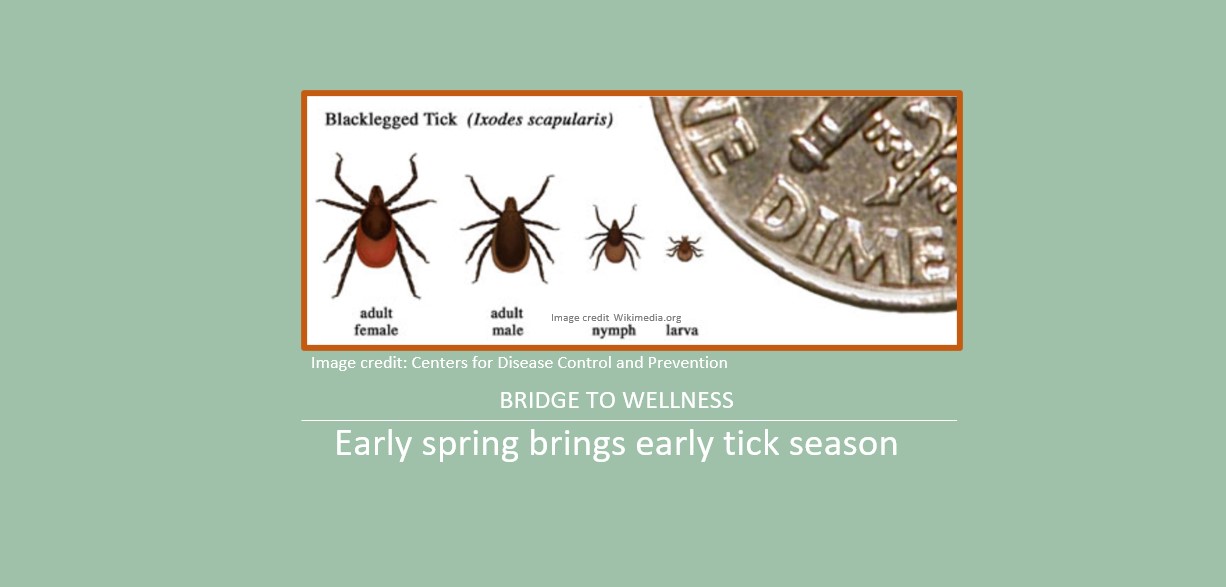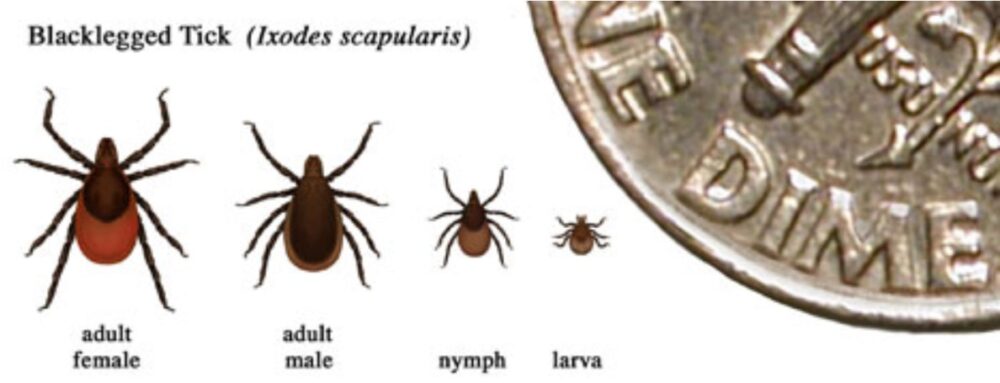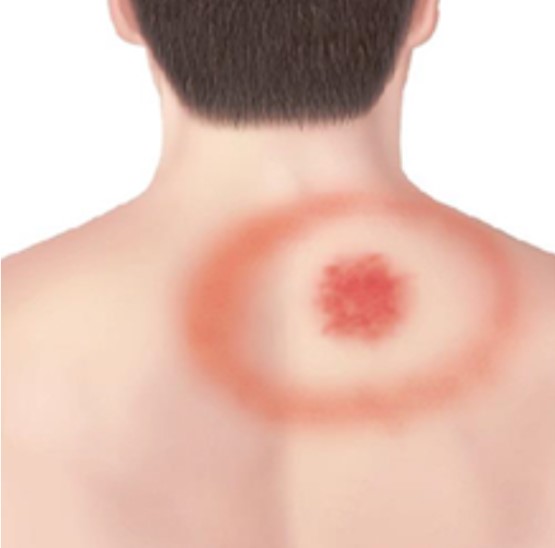
Bridge to Wellness: Early spring brings early tick season
by Jennifer Matthews
The early arrival of spring may also bring an early arrival of ticks and other insects. Stockbridge is part of a confirmed area where Lyme disease can be transmitted by the bite of an infected deer tick, which is also known as the blacklegged tick. A bite doesn’t necessarily mean you will get Lyme disease, but it’s important to know the risks and prevention strategies.
In Michigan, ticks are most active during the warmer months, April through September. This is a time to be vigilant about monitoring for ticks. Use these prevention strategies to avoid tick bites and the issues they can cause.
Avoid areas known to have higher tick populations
- Ticks prefer shady moist areas in wooded and grassy locations
- Stay on trails and avoid high grass, brush, and fallen leaves
Monitor skin and clothes after being outdoors
- Wear light colors to make ticks more visible
- Perform daily tick checks. Ticks can hide in areas such as armpits, scalp, and groin.
- Remove any ticks from clothing before going indoors
- Shower, if possible, after being outdoors
- Remember to check your pets
- Use preventative measures to prevent ticks on your pets
Use repellents
- Insect repellents containing DEET and permethrin are effective for repelling ticks
- Apply to clothing and skin
- Always read and follow the label directions
What to do if you find a tick on yourself, children or pets?
- Remove the tick as soon as possible.
- Use a pair of tweezers to grip it by its head and mouth to ensure that the entire tick is removed when pulled away.
- If the tick is not attached, a bite may look like a red bump resembling a mosquito bite or a bull’s eye. Tick bites do not typically itch.
- A deer tick needs to be attached to someone for 36 hours or longer for Lyme disease to develop. Continue to monitor if you know you’ve been bit but are unsure if or how long the tick was embedded.
- See your doctor if symptoms of Lyme disease occur. Symptoms can include fever, rash, headache, body aches and fatigue. NOTE: The erythema migrans rash caused by a tick bite is a reddened area that increases in size and often clears in the middle to resemble a bull’s eye.
Many good resources are available online to learn more about minimizing risk, and recognizing symptoms of tick bites and Lyme disease. The Centers for Disease Control and Prevention is a good resource for information regarding ticks and the diseases they carry. You can also visit michigan.gov and search for “ticks” or “Lyme disease” to view information specific to the state of Michigan.


 This column is sponsored by the Stockbridge Area Wellness Coalition. Jennifer Matthews, RN, is a registered nurse in the Stockbridge School System. She has worked as a community nurse for the last eight years and is an active volunteer within the Jackson County foster care system. Jen has a passion for helping individuals advocate for their health and learn to navigate the healthcare system.
This column is sponsored by the Stockbridge Area Wellness Coalition. Jennifer Matthews, RN, is a registered nurse in the Stockbridge School System. She has worked as a community nurse for the last eight years and is an active volunteer within the Jackson County foster care system. Jen has a passion for helping individuals advocate for their health and learn to navigate the healthcare system.



